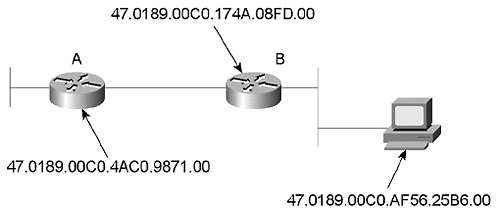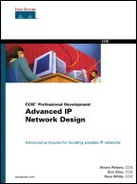Neighbor Loss and LSP Regeneration
Look at what happens when Router B in Figure B-1 reboots for some unknown reason.
Figure B-1. An IS-IS Adjacency

Router A will not immediately flush the LSPs that Router B has advertised as you might expect. Instead, Router A waits until the Remaining Lifetime field of these LSPs reaches 0 (they time out). Then, it floods to the rest of the network that the LSPs are unreachable. Finally, Router A flushes the LSPs from its database.
Therefore, Router A will not flush the LSP advertised by Router B for NSAP 47.0189.00C0.AF56.25B6.00 until its Maxage timer reaches 0. When Router B finishes rebooting and rebuilds its adjacency with Router A, it sends this LSP to Router A with a sequence number of 1.
When Router A receives this LSP, it examines its database and finds that it has an existing LSP for this destination with a higher sequence number. Then, Router A replies to Router B with a copy of this later LSP.
Router B, on receiving this later LSP, sets its LSP sequence number for this destination so that it is higher than the copy that Router A replied with.
